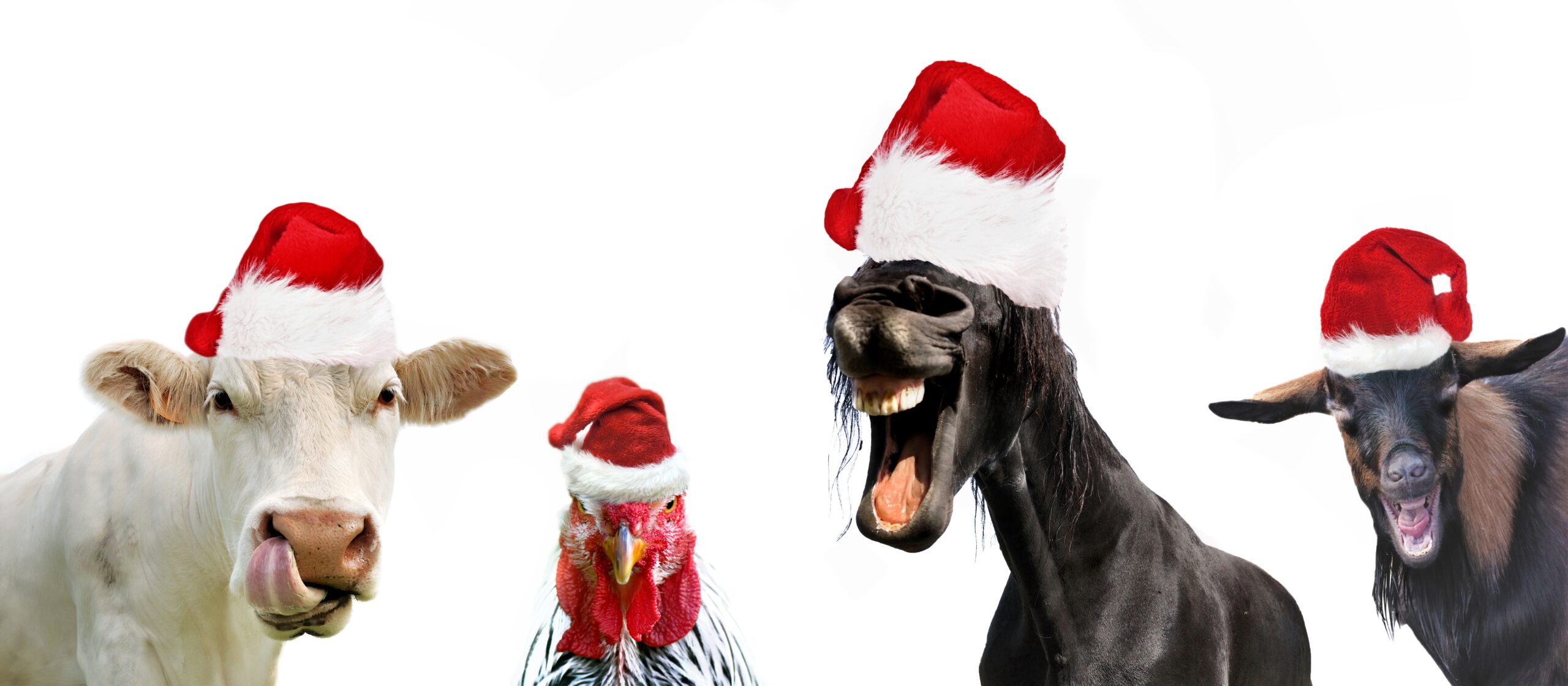By Katie Reed | December 12, 2022 | Blog

Animals play a big part in Christmas celebrations across the world, from Santa’s reindeer to the donkey in the story of the Nativity.
But what about the more unusual animals, such as the Yule Cat from Icelandic legends or festive spider in Ukrainian folk tales? Do any of these ring any bells?
Yule Goat from Scandinavia: believed to visit households to make sure that holiday plans are underway.
Kangaroo from Australia: based on the song ‘The Six White Boomers’. A boomer is a male kangaroo and, in the song, Santa uses the kangaroos to push his sled when he comes to Australia for Christmas.
Rooster from Spain: Misa de Gallo or Rooster’s Mass, is celebrated on Christmas Eve, in honour of the rooster that is said to have crowed the night Jesus was born.
Donald Duck from Sweden: dating back to when the country had just two television channels and Christmas was the only time of year when most people could watch American cartoons. Over the following years this unusual festive tradition has become a feature of Swedish Christmas.
The Yule Cat from Iceland: legend has it that during the Christmas period a giant cat roams the Icelandic countryside eating lazy farm workers.
Festive spiders from Ukraine: folk tales speak of a poor widow and her children unable to afford to decorate their Christmas tree. The family were helped by a spider, which weaved a sparkling silver web over all the branches to give a beautiful silver tree.
Reindeer from the USA: the idea of reindeer pulling Santa Claus’ sleigh first appeared in the poem ‘The Night Before Christmas’ written by Professor Clement Clarke Moore.
Camel from Syria: according to legend the camel is the traditional gift-bringer, as it was the youngest camel carrying the ‘Three Kings’ or ‘Magi’, who followed the star to search for the baby Jesus. Unfortunately, the poor camel was so drained by the long journey he fell down, but Jesus is said to have blessed the camel with immortal life.
Donkey: associated in the Nativity story with the three wise men who followed the star to the stable where Jesus was born. It’s also thought that a donkey carried Mary to Bethlehem.
Ox and sheep: also mentioned in the Nativity story, usually pictured standing around the manger.
Krampus from Austria: a less benevolent creature, half-goat, half-demon. It is known as Santa’s evil counterpart who punishes naughty children, while Santa leaves gifts for the nice ones.
Robin from the UK: dating back to Victorian times when postmen were known as ‘robins’ due to their red-breasted uniforms. This led to robins on Christmas cards representing the postman who actually delivered the cards themselves. There are also other legends about robins that date back to the Nativity story itself.
At The Language Factory, we love the diversity of our international group of translators and Project Managers. Word Geek is looking forward to embracing lots of new festive traditions and of course, animals, this Christmas.
Get insights, information and offers from The Language Factory.